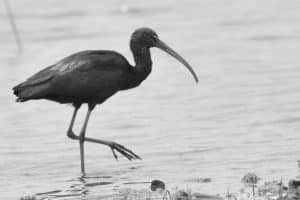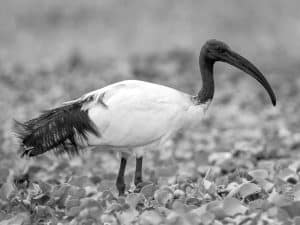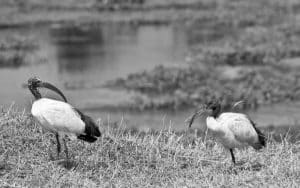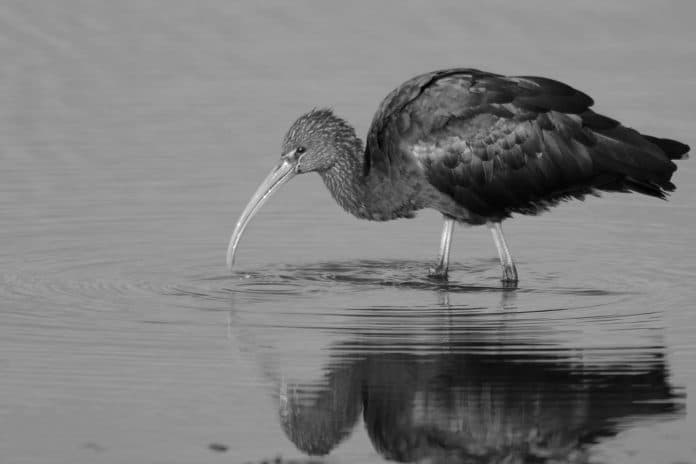Introduction to Ibises in Tanzania
Welcome to the enchanting world of ibises in Tanzania, where these graceful and intriguing birds captivate the hearts of nature enthusiasts and conservationists alike. The diverse landscapes of Tanzania provide an ideal habitat for several species of ibises, making it a haven for birdwatchers and wildlife photographers. Ibises, with their distinct long bills and striking plumage, hold a significant place in the country’s ecosystem and culture. In this comprehensive overview, we will delve into the fascinating world of ibises in Tanzania, exploring their habitat, behavior, species diversity, conservation efforts, best spotting locations, photography tips, cultural significance, challenges, and the imperative call to action for ibis conservation. Join us on this journey as we unveil the beauty and importance of ibises in Tanzania.
Habitat and Behavior of Ibises

Tanzania’s diverse ecosystems, including wetlands, savannas, and forests, provide the perfect environment for ibises to thrive. These elegant birds are commonly found near water bodies such as lakes, rivers, and marshes, where they can forage for food and nest in the surrounding vegetation. Ibises are known for their distinctive long, curved bills, which they use to probe the mud and shallow waters in search of small aquatic creatures, insects, and invertebrates. Their graceful and deliberate movements as they wade through the water or stroll along the shoreline are a sight to behold, showcasing their adaptability to aquatic habitats.
Ibises in Tanzania exhibit both solitary and gregarious behaviors, often congregating in groups to forage and roost. During the breeding season, their courtship displays and nest-building activities are a spectacle to witness, as they create intricate nests using twigs and reeds in the wetland vegetation. These social and nesting behaviors contribute to the vitality of Tanzania’s ecosystems, as ibises play a crucial role in regulating the populations of aquatic organisms and maintaining the ecological balance of their habitats.
Species of Ibises Found in Tanzania
Tanzania boasts a rich diversity of ibis species, each with its unique characteristics and adaptations to the varied landscapes of the country. The African Sacred Ibis (Threskiornis aethiopicus) is one of the prominent ibis species found in Tanzania, recognizable by its striking white plumage, contrasting black wingtips, and a distinctive bald black head. These iconic birds are often spotted in wetlands, grasslands, and agricultural areas, where they scavenge for food and form communal roosting sites.
Another notable species is the Hadada Ibis (Bostrychia hagedash), known for its distinct call that resonates across the savannas and woodlands of Tanzania. With its iridescent green and bronze plumage, long legs, and curved bill, the Hadada Ibis embodies the essence of Tanzania’s avian diversity. These fascinating birds are often found in pairs or small groups, feeding on insects, small reptiles, and amphibians in their foraging territories.
The Glossy Ibis (Plegadis falcinellus) is also present in Tanzania, distinguished by its deep chestnut plumage, iridescent green and purple hues, and long, down-curved bill. These elegant birds frequent shallow wetlands and rice fields, where they use their specialized bills to probe the soft mud for invertebrates and crustaceans. The presence of these diverse ibis species in Tanzania reflects the country’s commitment to preserving its natural heritage and supporting avian conservation efforts.
Conservation Efforts for Ibises in Tanzania
As with many wildlife species, ibises in Tanzania face various conservation challenges, including habitat loss, human-wildlife conflicts, and poaching. To address these threats and safeguard the populations of ibises, several conservation organizations and governmental agencies have implemented proactive measures to ensure the long-term survival of these captivating birds. Initiatives such as habitat restoration, community-based conservation projects, and public awareness campaigns have been instrumental in promoting the protection and sustainable management of ibis habitats across Tanzania.
One notable conservation success story is the establishment of protected areas and wetland reserves that serve as vital sanctuaries for ibises and other waterbird species. These protected areas, including the Lake Manyara National Park, Ngorongoro Conservation Area, and the Kilombero Valley, play a pivotal role in preserving the diverse habitats and migratory routes of ibises, providing essential breeding, feeding, and roosting sites for these avian treasures.
Furthermore, collaborative efforts between local communities, conservation groups, and governmental agencies have resulted in the implementation of sustainable land-use practices and the mitigation of human-wildlife conflicts in ibis habitats. By engaging with local stakeholders and promoting eco-tourism initiatives, conservationists have fostered a sense of stewardship and responsibility towards the protection of ibises and their natural habitats. These concerted efforts underscore Tanzania’s commitment to conserving its avian biodiversity and ensuring a harmonious coexistence between humans and ibises.
Best Places to Spot Ibises in Tanzania

For avid birdwatchers and nature enthusiasts seeking to encounter the beauty of ibises in their natural habitats, Tanzania offers a plethora of exceptional locations that provide prime opportunities for ibis sightings. The renowned Lake Manyara National Park stands as a premier destination for observing African Sacred Ibises in their wetland and savanna habitats, where these elegant birds engage in foraging, nesting, and communal roosting activities. The park’s diverse landscapes, ranging from lush groundwater forests to expansive grasslands, create an ideal setting for experiencing the captivating presence of ibises amidst a tapestry of wildlife and natural wonders.
Another captivating location for ibis sightings is the Ngorongoro Conservation Area, home to a mosaic of habitats that encompass grasslands, woodlands, and the iconic Ngorongoro Crater. Here, visitors can witness the graceful flight of Hadada Ibises as they traverse the open plains, emitting their distinctive calls amidst the scenic backdrop of one of Africa’s most remarkable natural settings. The varied ecosystems within the conservation area provide an immersive experience for observing ibises and gaining insight into their ecological significance within Tanzania’s diverse landscapes.
The sprawling wetlands of the Kilombero Valley, including the Kilombero Floodplain and surrounding riverine forests, offer an exceptional opportunity to encounter the Glossy Ibis in its preferred aquatic habitats. With their striking plumage and graceful movements, Glossy Ibises adorn the wetland environment, showcasing the interconnectedness between these avian inhabitants and the dynamic ecosystems of Tanzania. The Kilombero Valley serves as a vital stronghold for ibises and exemplifies the country’s commitment to preserving its wetland biodiversity for future generations.
Tips for Photographing Ibises in Tanzania
Capturing the beauty and essence of ibises through photography requires patience, skill, and an understanding of their behavior and habitats. Whether you are an amateur enthusiast or a seasoned wildlife photographer, these tips will help you enhance your photography skills and create stunning images of ibises in Tanzania.
1. Understanding Ibises’ Behavior:
Before embarking on a photography expedition, take time to observe the behavior and movements of ibises in their natural habitats. Understanding their foraging patterns, roosting sites, and preferred resting areas will enable you to anticipate their actions and capture authentic moments in your photographs.
2. Utilizing Natural Lighting:
The quality of light plays a crucial role in capturing the intricate details of ibises’ plumage and features. Opt for early morning or late afternoon sessions to leverage the soft, golden light that enhances the textures and colors of the birds. Position yourself to take advantage of the natural lighting and create compelling compositions that showcase the elegance of ibises.
3. Patience and Camouflage:
To achieve intimate and authentic photographs of ibises, exercise patience and employ camouflage techniques to blend into the surroundings. By immersing yourself in the natural environment and waiting for the right moments, you can capture genuine expressions and behaviors of ibises without causing disturbance.
4. Focusing on Unique Perspectives:
Experiment with different angles and compositions to convey the distinctiveness of ibises in their habitats. Explore close-up shots that highlight their intricate plumage and expressive features, as well as wide-angle views that contextualize their presence within the broader landscape.
5. Respecting Wildlife and Habitats:
Above all, prioritize the well-being of ibises and their habitats while photographing these captivating birds. Maintain a respectful distance, adhere to ethical photography practices, and minimize any potential disturbances to ensure a harmonious coexistence between photographers and ibises.
By integrating these tips into your photography approach, you can elevate your images of ibises in Tanzania, capturing the essence of their beauty and significance within the country’s natural heritage.
Cultural Significance of Ibises in Tanzania
In addition to their ecological importance, ibises hold cultural significance and symbolism within the rich tapestry of Tanzania’s traditions and folklore. Across various ethnic groups and indigenous communities, ibises are revered for their graceful presence, distinctive features, and symbolic connections to spirituality and natural harmony. The African Sacred Ibis, in particular, is associated with ancient Egyptian mythology and religious beliefs, where it was venerated as a symbol of wisdom, protection, and divine guidance.
In Tanzanian folklore and oral traditions, ibises are often depicted as messengers of good fortune and guardians of the natural world, embodying the interconnectedness between humans and the avian realm. Their elegant flight, striking plumage, and enigmatic presence have inspired stories, proverbs, and artistic expressions that celebrate the enduring connection between people and nature. Through music, dance, and visual arts, ibises are honored as emblematic figures that evoke a sense of reverence and admiration for the natural world.
The cultural significance of ibises in Tanzania underscores the deep-rooted respect and admiration for these avian inhabitants, reflecting the intrinsic bond between human communities and the diverse wildlife that enriches the country’s heritage. As stewards of Tanzania’s cultural legacy, it is imperative to recognize and preserve the cultural narratives and traditions that honor the enduring presence of ibises and their timeless significance within the country’s cultural tapestry.
Challenges Facing Ibises in Tanzania

Despite their intrinsic value and cultural significance, ibises in Tanzania confront a myriad of challenges that threaten their survival and well-being. Habitat degradation and loss due to human activities, including agriculture, urbanization, and infrastructure development, have encroached upon the natural habitats of ibises, diminishing the available resources and nesting sites essential for their sustainability.
Furthermore, the escalating impacts of climate change, such as altered rainfall patterns and increasing temperatures, pose significant risks to the delicate ecosystems that ibises depend on for their survival. These environmental shifts can disrupt the availability of food sources, nesting conditions, and migratory patterns, amplifying the vulnerability of ibises and necessitating adaptive conservation strategies to mitigate the repercussions of climate change.
Human-wildlife conflicts also pose a considerable threat to ibises in Tanzania, as interactions with agricultural practices and human settlements can result in disturbances to their habitats and breeding sites. Addressing these conflicts through community-based conservation initiatives, sustainable land-use practices, and mitigating measures is essential to fostering coexistence between humans and ibises while safeguarding their natural habitats.
In addition, the illegal wildlife trade and poaching activities pose a grave threat to the populations of ibises, as their distinctive features and plumage make them targets for exploitation and commercial trade. Strengthening anti-poaching efforts, enhancing law enforcement measures, and raising awareness about the detrimental impacts of wildlife trafficking are critical components in combatting these illicit activities and protecting ibises from exploitation.
Conclusion
In conclusion, the beauty and significance of ibises in Tanzania encompass a rich tapestry of ecological, cultural, and conservation dimensions that underscore their indispensable role within the country’s natural heritage. As stewards of Tanzania’s diverse ecosystems, it is imperative to recognize and uphold the intrinsic value of ibises and prioritize their conservation for future generations.


































